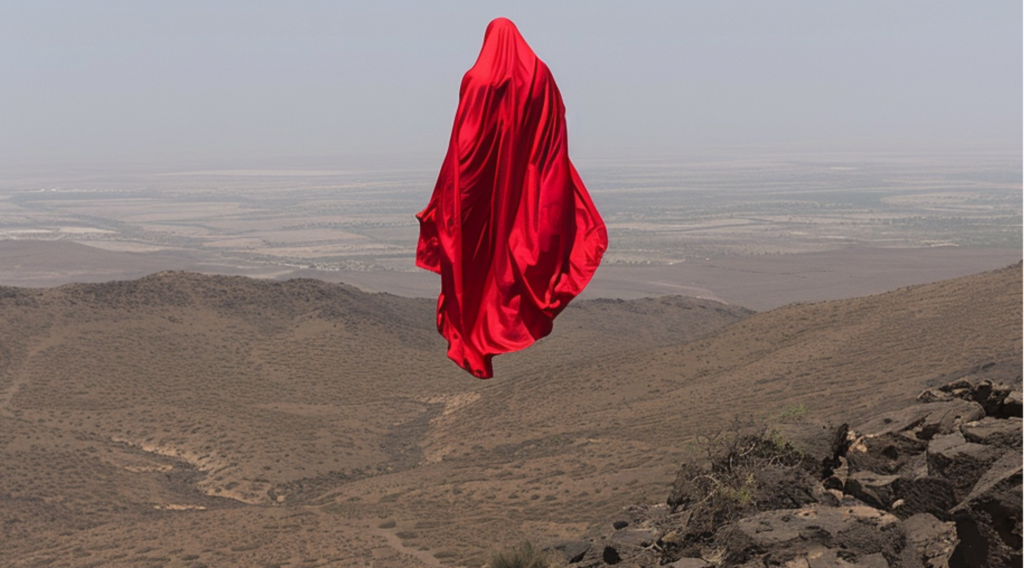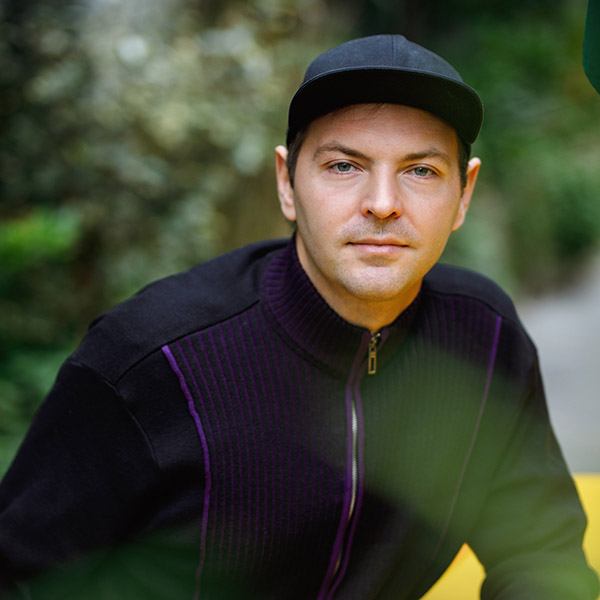
Thursday, March 13 – Sunday, March 30
Digital Desert
Mihai GRECU
Room Gilbert-Gaillard, 2 rue Saint Pierre
Opening hours:
Tuesday to Saturday, 1pm to 7pm
Sunday from 2pm to 6pm
Free access
This post is also available in: Français (French)

Thursday, March 13 – Sunday, March 30
Opening hours:
Tuesday to Saturday, 1pm to 7pm
Sunday from 2pm to 6pm
Free access
Digital Desert is a series of intricate visual metaphors that explore the concept of artificial landscapes in an age where nature and technology increasingly collide. Positioned at the intersection of land art and science fiction-inspired dreamscapes, this project is a collaborative endeavor with AI, where the boundaries between organic and synthetic blur. Together, we conjure vivid, speculative visions of matter’s transformation within the vast, uncharted terrain of the digital desert—a place both alien and familiar, where new worlds emerge.
At its core, the series serves as an exploration of interconnectedness: the delicate threads binding vegetation, the fluid and vaporous nature of cloud-like matter, the strange beauty of levitating geology, and the cold precision of artificial spaces. Here, nature is translated into the language of machines, rendered not with brushstrokes or clay but through algorithms and data. Despite their origins, these creations retain a sense of fragility. The artworks, ephemeral and otherworldly, float above the digital desert like transient entities, untethered yet encased within a synthetic framework—a nod to self-destructing art exhibitions where permanence is an illusion.
Each of these landscapes stands as a testament to the increasingly blurred boundaries between the natural and the technological. They reflect a contemporary reality where human consumption has scarred the Earth, reducing vast ecosystems to ashes and replacing them with virtual simulations. In this world, plants, animals, and even entire environments are reconstructed as digital replicas—simulacra that echo what has been lost but can never fully replace the essence of the real.
Through its evocative imagery and speculative approach, Digital Desert invites the viewer to ponder the implications of this transformation. It asks questions about what it means to coexist with technology, about the consequences of human intervention, and about the fleeting nature of existence itself. In these imagined dreamscapes, the artificial becomes a mirror to our reality, reflecting the paradox of progress and loss in a society racing toward an uncertain future.
Mihai Grecu is a Romanian visual artist and filmmaker. A graduate of Le Fresnoy, Studio National des Arts Contemporains, he lives and works in Paris. Oscillating between experimental cinema and CGI creations, his singular imagery stages dreamlike visions shot through with political allegories, surrealist objects, modified architecture and symbolic characters.
He is the laureate of the “Prix du Syndicat de la Critique du Cinéma” for his documentary work. His filmic and artistic work has been presented and awarded at numerous film festivals (Rotterdam, Festival du Nouveau Cinéma de Montréal, Videoformes, Videobrasil) and exhibitions (“Dans la nuit, des images” at the Grand Palais, “Labyrinthe de mon esprit” at Le Cube, “Studio” at Galerie Les filles du Calvaire, Ars Electronica etc).
Artist’s website: https://mihaigrecu.net/

Interview by Fanny Bauguil (VIDEOFORMES relay teacher)
It’s a holographic device featuring visual metaphors created with the help of artificial intelligence, depicting strange, imaginary desert spaces.
Synthesizing nature through AI.
It was shown in Cluj, Romania. I start by making AI videos and then I transform them into 3d by adding depth data to create the holographic aspect.
This installation is a tribute to Bill Viola, one of the pioneers of video art, who died last year.
Above all, adapt AI-generated images to this deep 3d rendering technology.
My Instagram, @thegrecu
AI, desert, hologram
In my artistic practice, I gradually turned to digital creation in the 2000s, making video artworks and experimental films that blend dreamlike visions with real-life shots. This path led me towards a complex work process using constantly evolving new technologies.
First through CGI and then with the advent of virtual reality, 3d animation and finally Artificial Intelligence, I express myself with a wide range of creative tools on digital media. Between 2006 and 2008 I was a student at Le Fresnoy, which gave me my first opportunity to work with a film and post-production team. The two hybrid works I produced at Le Fresnoy, at the crossroads of experimental cinema, video art and 3d animation, have won awards and been selected for numerous art festivals and exhibitions in France and abroad. This experience has broadened my vision, motivating me to create audacious projects in which I address contemporary issues (such as the ecological crisis, late capitalism, geopolitics) by confronting them with increasingly powerful and philosophically provocative new technologies (computer-generated images, virtual reality, holograms, artificial intelligence). I’ve come to understand that, to reveal the hidden dimensions of the contemporary world, I need to master digital technologies, which are one of the constitutive languages of contemporary geopolitics, increasingly complex and unpredictable, against a backdrop of late capitalism and the breakthrough of extremist ideologies. Gradually, a motif became central to my work: the allegory of the absurdity of totalitarian political regimes, which I represent using new technologies. Initially centered around the ecological crisis and the excesses of capitalism in my work of the 2010s, the political metaphor begins to encompass the themes of totalitarianism and dictatorship around 2015.
The series of three short films “centipede sun”, “exland” and “we’ll become oil” (between 2009 and 2012) hijack desert landscapes to reveal invisible facets of a growing environmental crisis. I transform existing nature by adding visual metaphors that reflect on the complexity of climatic and geographic disruption. For example, in “we’ll become oil” I show gigantic fictitious oil well fires in an indeterminate country, entirely computer-generated. Echoing the contemporary world, this work presents a fictional but entirely possible dystopia, like a window onto alternative presents that make us think about the way in which late capitalism re-models millennia-old nature.